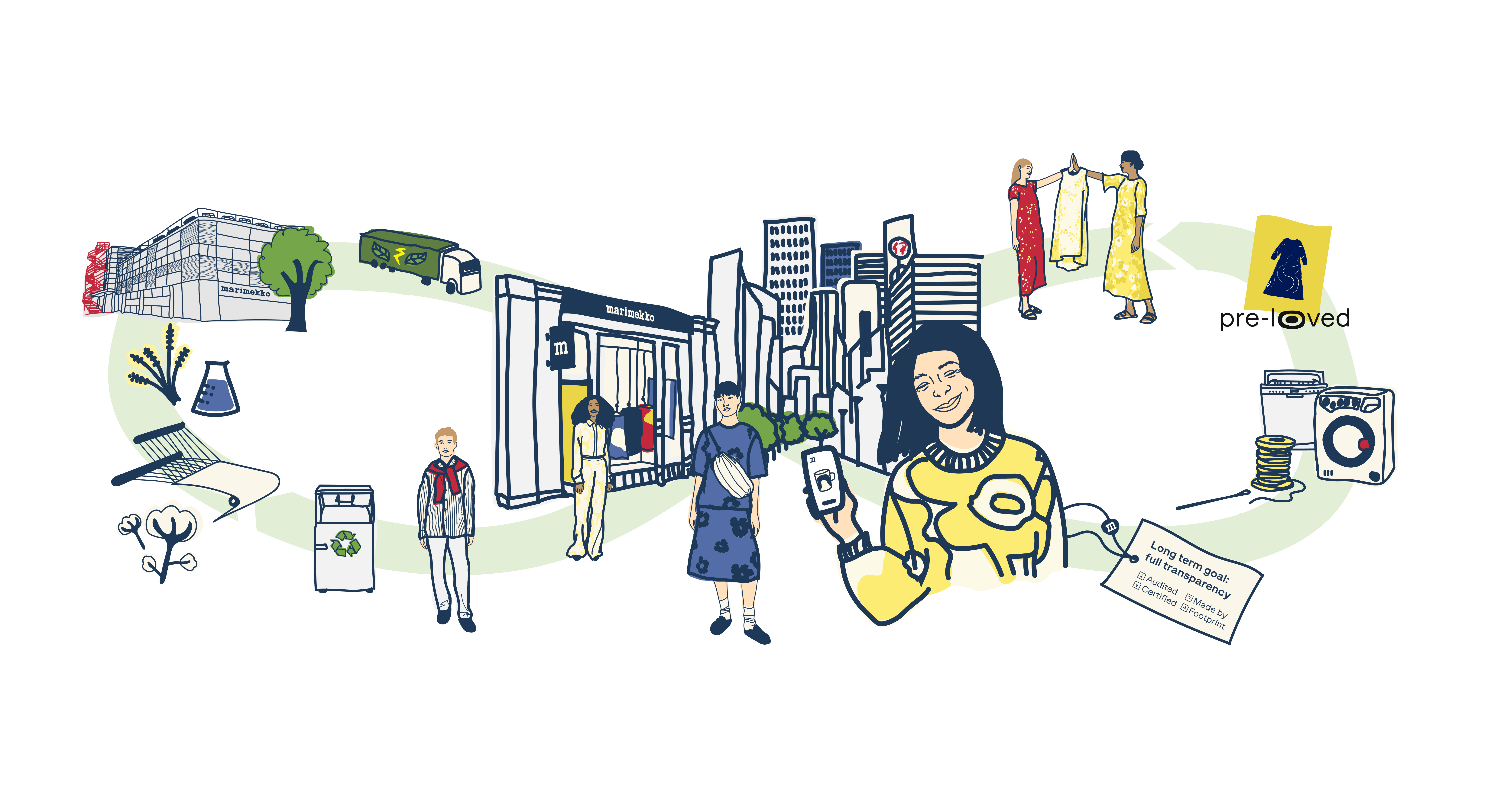We believe that determined sustainability efforts support the company’s long-term success, which is why sustainability has been defined as one of the five strategic success factors during the strategy period of 2023–2027. Sustainability is an increasingly important factor in consumer choices and has an impact on attracting and retaining talent as well as investors. Regulation regarding different sustainability aspects is also constantly developing.

Our sustainability strategy for 2021–2025 is built on three main principles that extend beyond our own
operations to the value chain. These three main principles guide us on our journey:
Timeless design brings joy for generations to come
We want to provide our customers with timeless, functional and high-quality products. Our ambition is that, during their lifetime, Marimekko items bring joy to many different consumers, even generations, after which they can finally be recycled into new products. We promote circularity with new processes and
services, for example, to help consumers extend the life cycle of products.
The products of tomorrow leave no trace
We have launched several projects to reduce greenhouse gas emissions intensity in our entire value chain. We are committed, for example, to reducing the greenhouse gas emissions intensity of the purchased textile materials and logistics as well as the water use intensity of the textile materials. In addition, we are reducing the greenhouse gas emissions from our own operations. We have set science-based short-term emission reduction targets in line with the UN Paris Agreement on climate change.
Positive change through fairness and equality
We want to promote the implementation of fairness and equality in our value chain and to provide an inspiring and caring workplace. We will continuously provide more information about our products and their origin, and our long-term goal is to make our supply chains as transparent as possible. By actively collaborating with other players in the industry, we can drive positive change across the whole sector.
Improving operating practices throughout the value chain
Improving our products and practices is a journey where each milestone is followed by a new goal. Our current sustainability strategy extends to the end of 2025. The targets and focus areas we have determined for this period take place in different stages of the product’s life cycle, from raw materials to end use, and apply not only to our own operations but also to our value chain.
Our industry is characterized by long and complex supply chains. The development of transparency and practices in supply chains requires long-term efforts, both within our organization and in cooperation with our partner suppliers, for example. At the same time, a significant proportion of the environmental impacts of our value chain arise from the use and care of the products, so customer communication and education also play an important role.
In addition to seeking continuous improvement in our day-to-day operations, we are involved in many cooperation projects and networks in the textile and fashion industry. We believe that collaboration is the most effective way to promote positive change. We also work together with several different companies on material innovation to support the renewal of the entire industry by, for example, enabling the testing of different textile materials, dyes, and coatings at our textile printing factory in Helsinki, Finland.
Innovations related to technology, materials, and business models help us move gradually toward our long-term objective: a value chain that is based on the principles of circular economy, where timeless products bring long-lasting joy, while we continue to promote fairness and equality.